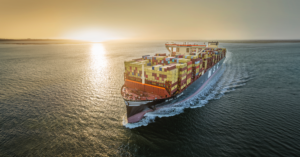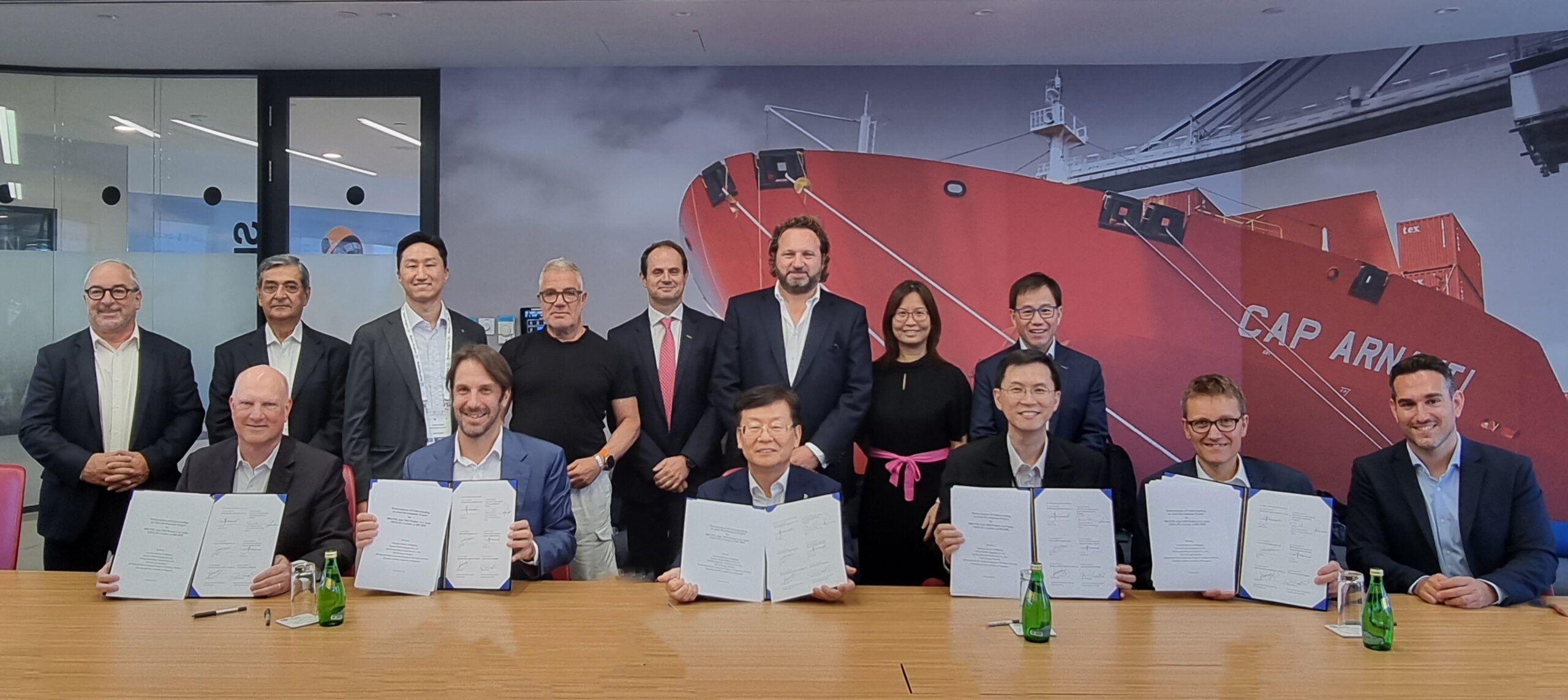A report from the Maersk Mc-Kinney Møller Center for Zero Carbon Shipping outlines how shipping can cut more than 6 exajoules of energy use by 2030 to align with Paris climate targets.
The industry will need to limit its consumption of fossil fuels to around just six exajoules by 2030 to align with the Paris 1.5°C objective, according to a new report from the Maersk Mc-Kinney Møller Centre for Zero Carbon Shipping. The centre’s CEO Bo Cerup-Simonsen urged ship operators to take up the exajoule challenge as he highlighted the actions that could lead to a dramatic reduction in emissions.
The roughly 300 million tonnes of fuel used by shipping today equates to around 12.6EJ. Replacing one of those exajoules would require 280,000 gigawatt-hours of electricity – equivalent to the current consumption of Mexico. But rather than the more than 50% reduction in emissions needed in the next eight years, the report notes that “current decarbonisation efforts” will lead to a 10% increase in emissions by 2050.
“We’re looking at a situation where the gap is widening,” said Cerup-Simonsen. “This is why we have to translate this gap into concrete actions that we can explain. One exajoule is 8% of the current energy consumption of the global fleet. So it becomes an interesting and very practical way of explaining what it actually takes. Everybody can then extrapolate and see what it means for their operations.”
The simplest way of shedding one exajoule is to improve onboard energy efficiency by just 1% a year to 2030, saving a total of 24 million tonnes of fuel a year. Using alternative fuels could cut emissions by around 80% if applied across the global fleet, the centre estimates. But turning that into a reality by 2030 is a greater challenge.
Scaling production and fleet
More than 3,000 vessels would need to be running on alternative fuels by 2030 to shed 1EJ, up from around 700 today. Replacing 1EJ of fuel with ammonia generated by renewable electricity would need around 320 plants, each producing around 8.75 million cubic metres of the gas a year. There are only a handful of such plants today to meet global demand beyond shipping.
Reducing fossil use by 1EJ by 2030, let alone by more than six, seems a distant prospect given current commitments from ship operators. Pledges compiled by the centre will lead to a roughly 13% reduction in emissions by 2050, by which time many IMO member states hope fossil use will be phased out altogether.
Ship operators in the consumer and consumer product sectors – container vessels, car carriers and ro-ros – are leading the way in commitments, while around half of the top 30 operators in the bulk and tanker sectors have yet to make any commitment to either reaching net zero or meeting IMO emission targets.
As well as giving the state of industry readiness for alternative fuels and projections on availability and uptake, the report outlines required actions across several other areas, including regulation and incentivising first movers and early adopters.
Related news


MSC joins SEA-LNG as latest coalition member

ITIC and ICS to host panel discussion during LISW




































